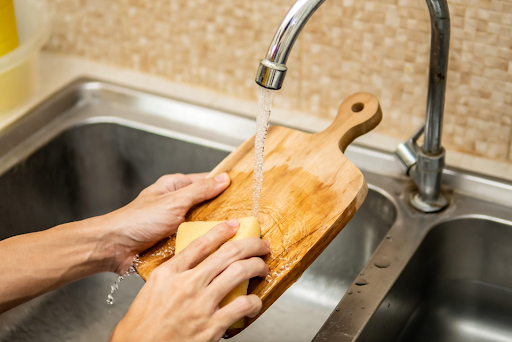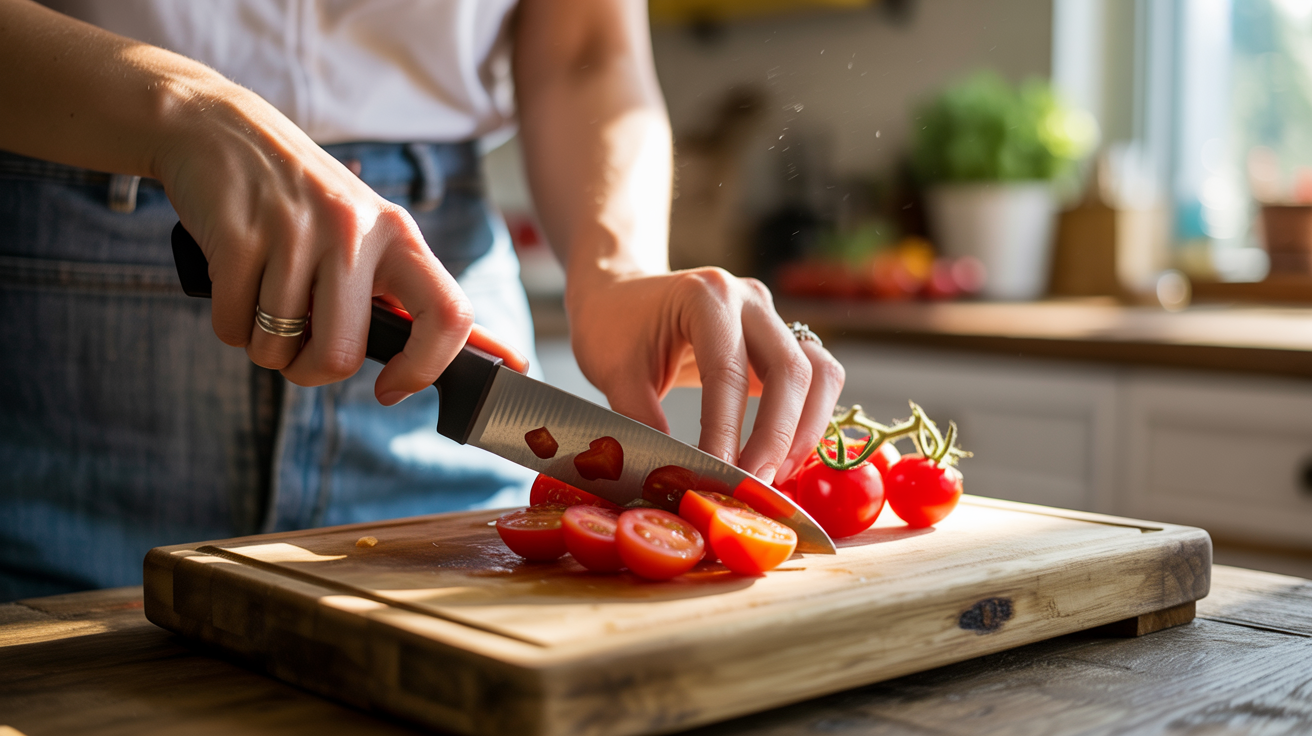
How to Clean and Maintain Wooden Cutting Boards (Without Damaging Them)
Wooden cutting boards are timeless, practical, and beautiful—making them a staple in both home and professional kitchens. But no matter how premium your board is, even the healthiest cutting boards can become breeding grounds for bacteria, warp from water exposure, or split from dryness—unless you care for them properly.
Whether you own a rich walnut cutting board, a durable maple wood cutting board, or one of your cherished custom wood cutting boards, this guide will walk you through everything you need to know to clean, maintain, and protect your investment for the long haul—without damaging it.
Why Proper Maintenance Matters
There’s a reason chefs, food lovers, and health-conscious home cooks gravitate toward wooden boards: they’re kinder to your knives, naturally antimicrobial, and more sustainable than plastic. But they only live up to their benefits when properly maintained.
Here's what regular care does:
- Prevents cracking & splitting: Wood can dry out fast. Without oiling, boards can crack or even split in half.
- Reduces warping: Water exposure causes boards to warp, especially if one side stays wet longer than the other.
- Stops bacteria buildup: A well-maintained wooden board is less porous and easier to sanitize, keeping your food prep safe.
- Protects your knives: Wood is soft enough to keep blades sharper for longer, unlike glass or hard plastic.
-
Preserves beauty: Nothing beats the smooth finish and rich grain of an oiled board, it’s a design piece in your kitchen.
If you want to keep your board in the “forever” category, not the “replace after 6 months” pile, this guide is for you.
Daily Cleaning: Do’s and Don’ts
Think of daily cleaning as “first aid” for your cutting board. It's all about keeping it clean without exposing it to excessive water or harsh chemicals.
Do This Every Day:
- Wipe off debris with a damp cloth immediately after use.
- Wash with hot, soapy water (gentle dish soap only).
- Scrub with a soft sponge, not steel wool.
- Dry thoroughly with a towel—don’t let it air-dry flat.
-
Store standing up or on its side to allow airflow.
Don’t Do This:
- Don’t soak it in the sink.
- Don’t leave wet items on top of it.
- Don’t put it in the dishwasher (ever!).
- Don’t use bleach or harsh disinfectants.
-
Don’t leave it sitting flat on a wet countertop.
Keeping your maple wood cutting board or walnut cutting board dry and clean daily is half the battle.
Weekly to Monthly Deep Cleaning
Even the healthiest cutting boards benefit from an occasional reset. Here’s how to deep clean and deodorize without harming the wood.
Salt + Lemon Scrub
This is a natural way to remove stains, food odors, and bacteria.
Steps:
- Sprinkle coarse kosher salt all over the board.
- Cut a lemon in half and use the cut side to scrub in circles.
- Let sit for 5–10 minutes.
- Wipe clean with a damp cloth and dry immediately.
Baking Soda & Vinegar (Light Use)
Use this combo for especially smelly boards—but not too often.
Steps:
- Sprinkle a thin layer of baking soda over the surface.
- Lightly spritz with white vinegar.
- Let it fizz and sit for no more than 3–5 minutes.
- Scrub gently, rinse, and dry thoroughly.
Note: Overuse of vinegar can dry out wood. Reserve this method for special occasions, not daily use.
How to Oil Your Cutting Board (And How Often)
Oiling is vital to maintaining your board’s strength, color, and water resistance. If your board looks dry, feels rough, or absorbs water instead of repelling it—it’s time to oil.
What You’ll Need:
- Food-grade mineral oil (never cooking oils!)
- Optional: Beeswax board conditioner
- Microfiber cloth or applicator sponge
- Clean, dry cutting board
Step-by-Step Guide:
- Clean and dry the board thoroughly.
- Apply mineral oil liberally across all sides and edges.
- Use your cloth to spread it evenly.
- Let it soak in for 4–6 hours (or overnight).
- Wipe off excess oil.
-
Repeat monthly—or weekly if your kitchen sees heavy use.
Adding beeswax board conditioner afterward creates an extra barrier that helps seal in the oil and repel water.
What to Avoid
No matter how careful you are, there are a few common mistakes that can undo all your good efforts. Here’s what to keep off your board:
- Olive oil, coconut oil, or vegetable oil: These go rancid and leave sticky, smelly residue.
- Harsh chemicals or antibacterial sprays: These degrade the wood and can make your board unsafe for food prep.
- Direct sunlight or heater exposure: Causes uneven drying and warping.
- Using one side for everything: Flip it often to avoid uneven wear.
- Leaving food scraps on the board for hours: This encourages bacteria and can stain the wood.
If you want your custom wood cutting boards to stay as pristine as they look on day one, steer clear of these pitfalls.
Signs Your Board Needs TLC
Not sure when to oil, replace, or refresh your board? Here are the signs to watch for:
- Your board looks dry or faded
This is the first hint your board needs oil.
- Knife marks are getting deeper
Frequent use creates grooves that can trap bacteria—clean and oil regularly to slow this down.
- Water absorbs instantly
A healthy board should repel moisture. If yours is soaking water, it’s time to oil.
- Persistent odors
If cleaning and lemon scrubbing don't eliminate smells, you may need to sand and reseal.
- Cracks or black spots
These can be signs of mold or deep bacteria, at this point, it might be time to retire the board or sand it down.
Recommended Products & Tools
Here’s what you really need to keep your healthiest cutting boards in great condition:
Must-Have Items:
- Food-grade mineral oil (like Howard or John Boos brands)
- Beeswax conditioner (optional but great for sealing)
- Microfiber cloth or dedicated applicator sponge
- Lemon + kosher salt (for deep cleaning)
-
Baking soda & vinegar (use sparingly)
Avoid buying overhyped “cutting board oils” that contain perfumes or additives. Stick to the basics.
FAQs
Can I use cooking oil to maintain my cutting board?
No—oils like olive or vegetable oil spoil quickly and will leave your board sticky and smelly.
Is it safe to cut meat on a wooden board?
Yes, as long as you clean and sanitize the board thoroughly afterward. Use hot water, mild soap, and dry immediately.
What’s the best type of wood for a cutting board?
Hardwoods like walnut, maple, and cherry are top choices. They’re durable, less porous, and knife-friendly.
How often should I oil my board?
For daily use, once every 3–4 weeks is ideal. For less frequent use, once a month is sufficient.
Can I sand my board if it’s rough or scratched?
Yes! Lightly sanding your board with fine-grit sandpaper can restore its surface before re-oiling.
Final Thoughts
Caring for wooden cutting boards is easier than it seems—and it’s well worth it. Whether you own a walnut cutting board for rich aesthetics, a maple wood cutting board for hardiness, or one of our custom wood cutting boards that’s as unique as your kitchen—routine cleaning and oiling will keep them looking and performing their best.
By following these steps, you’re not only protecting your board but also investing in a cleaner, safer, and more sustainable kitchen. After all, the healthiest cutting boards aren’t just about the wood—they’re about how you care for it.
Ready for a Cutting Board That’s Built to Last?
Explore our collection of handcrafted cutting boards—each one thoughtfully designed to be durable, beautiful, and easy to maintain. Whether you’re looking for something classic like a maple wood cutting board or something bold and rich like walnut, we’ve got the perfect fit for your kitchen.



Leave a comment
This site is protected by hCaptcha and the hCaptcha Privacy Policy and Terms of Service apply.